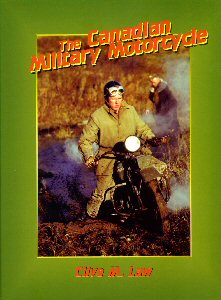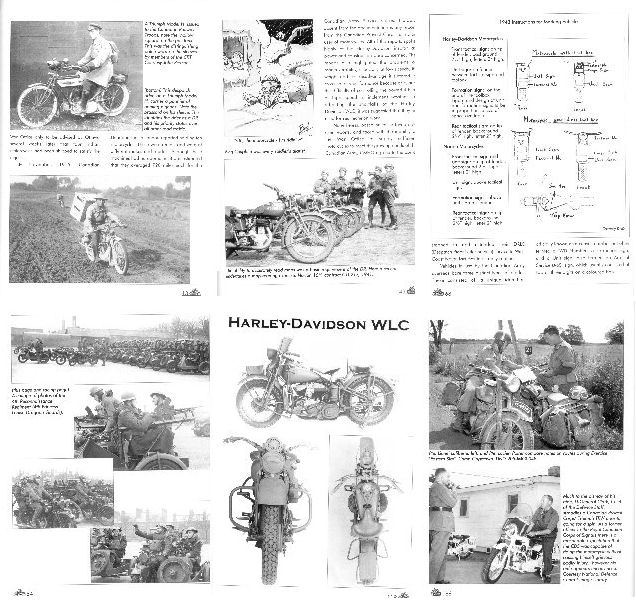 The Canadian Military Motorcycle
The Canadian Military Motorcycleby Clive M Law.
A4 size Hardback 193 pages
ISBN 978-1-894581-57-8
Service Publications,
Canada
www.servicepub.com
Review by Peter Brown
Canada's military used motorcycles before WWI. One privately owned by a soldier was used to carry messages, another was more warlike as it had a Vickers machine gun mounted on its sidecar. Over the following decades thousands more were to see service. During the Great War many were bought from America for use at home and abroad while units in France used numbers of British ones. Only a handful of new machines were bought between the wars, although many Militia soldiers took their own with them on manoeuvres.
When the Second World War began, demand for motorcycles increase rapidly. Their story was not unlike that in the earlier conflict, with Indian solo and combination and Harley-Davidson solo bikes bought for use at home with some of them going overseas, again most formations used British-supplied machines of various makes including BSA and Norton with others in smaller numbers. They were used in different ways by different units. Most had several available for general communication duties. Despatch riders used their speed and manoeuvrability to move messages around quickly on roads and cross-country. Convoy escorts found their speed on roads very useful. After the fall of France armed motorcycle units operated sidecar combinations with machine guns. Regiments converting to armour were issued motorcycles before heavier vehicles were available.
The different uses meant different bikes were preferred. Armed units had the Norton Big 4 with Motley mountings on their sidecars. Airborne formations used types including the specialised Welbike which could be air-dropped, though they appear to have made little use of them. Only one type was unique to Canada, a batch of Harley-Davidson bikes modified to their own requirements. These powerful bikes were very useful on roads but low ground clearance limited them away from hard surfaces.
Although they remained in use throughout the war, as time went on more use was made of jeeps which were as fast and agile as most bikes but allowed more equipment to be carried. Post-war use was more limited, a few were used by display teams for recruiting through publicity. Provosts kept theirs with a few still used by despatch riders. Only small numbers were bought including some Can Am bikes made in Canada, but by the end of the 20th century they were all gone.
Gone the may be but not forgotten, certainly by those who used them and plenty of photos were taken over the years which means their history can be recorded as it is here. Chapters give background details for each period with specific sections on training, maintenance schools, their employment in each theatre of war in WW2 including a small section on Royal Canadian Air Force use are all fully illustrated with over 450 black and white photos. Some of these are from official sources but many are from private collections. Between them they show all types in war and peace, in training and in the front line. Details of painting and marking bikes from official documents are included. The Harley-Davidson WLC produced to Canadian specification gets its own section with walk-around photos and serial number listings. Other sections cover special clothing issued to riders from different crash helmet patterns though protective coats and breeches to boots.
The text contains many interesting details such as changes to bikes in service and the changing uses made of them, as well as less obvious things like the Canadian way of riding which might otherwise easily be missed. Most Photos include riders showing the wide range of dress worn over the century though the greater part of coverage is the WW2 era.
Although coverage is specific to Canada, many of their bikes were British this makes this book a useful addition to the literature on them. For modellers with one of the few kits on hand this will provide plenty of options and ideal reference.

My thanks to Clive Law at Service Publications for for providing a review copy.
Highly recommended.
